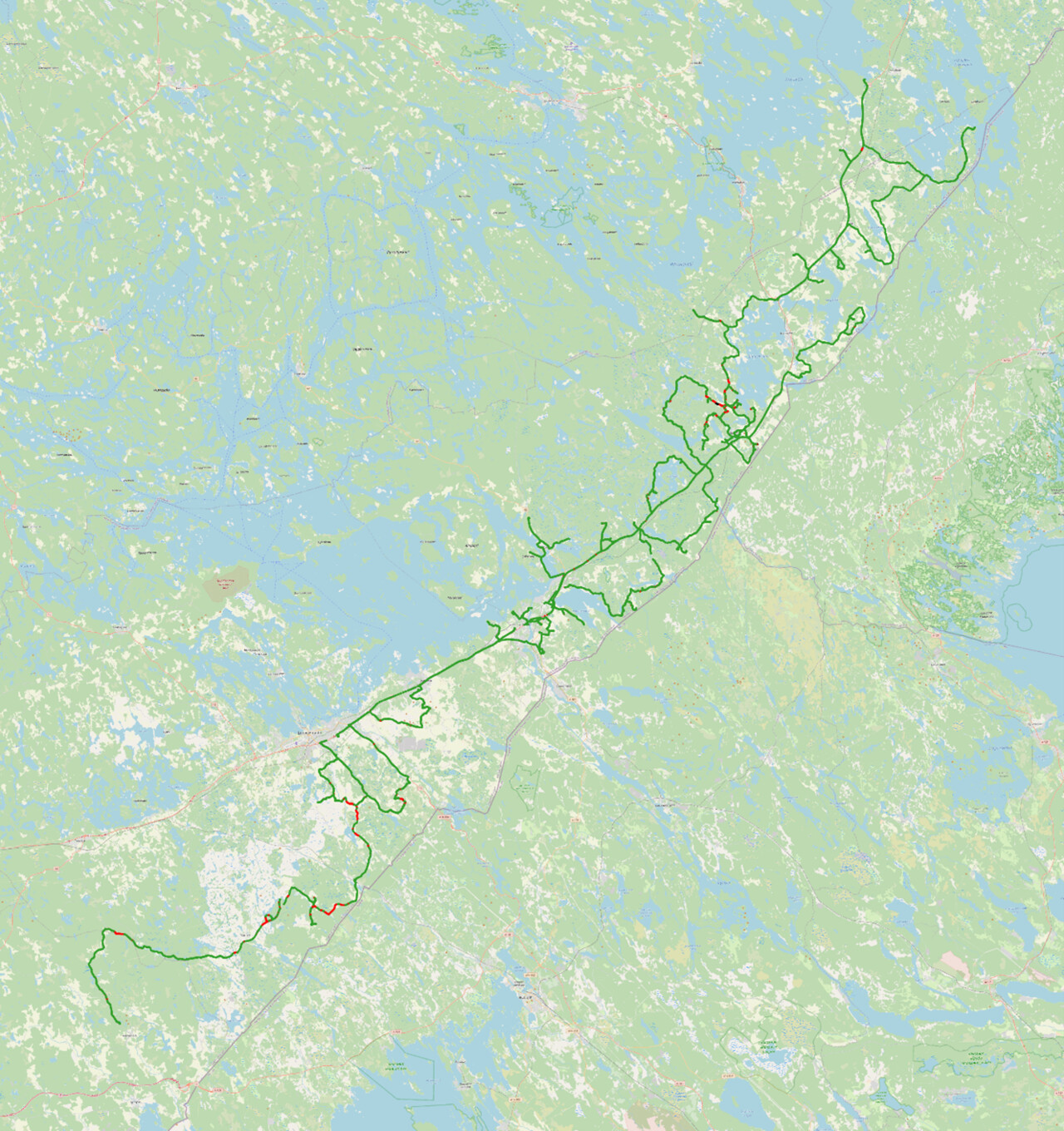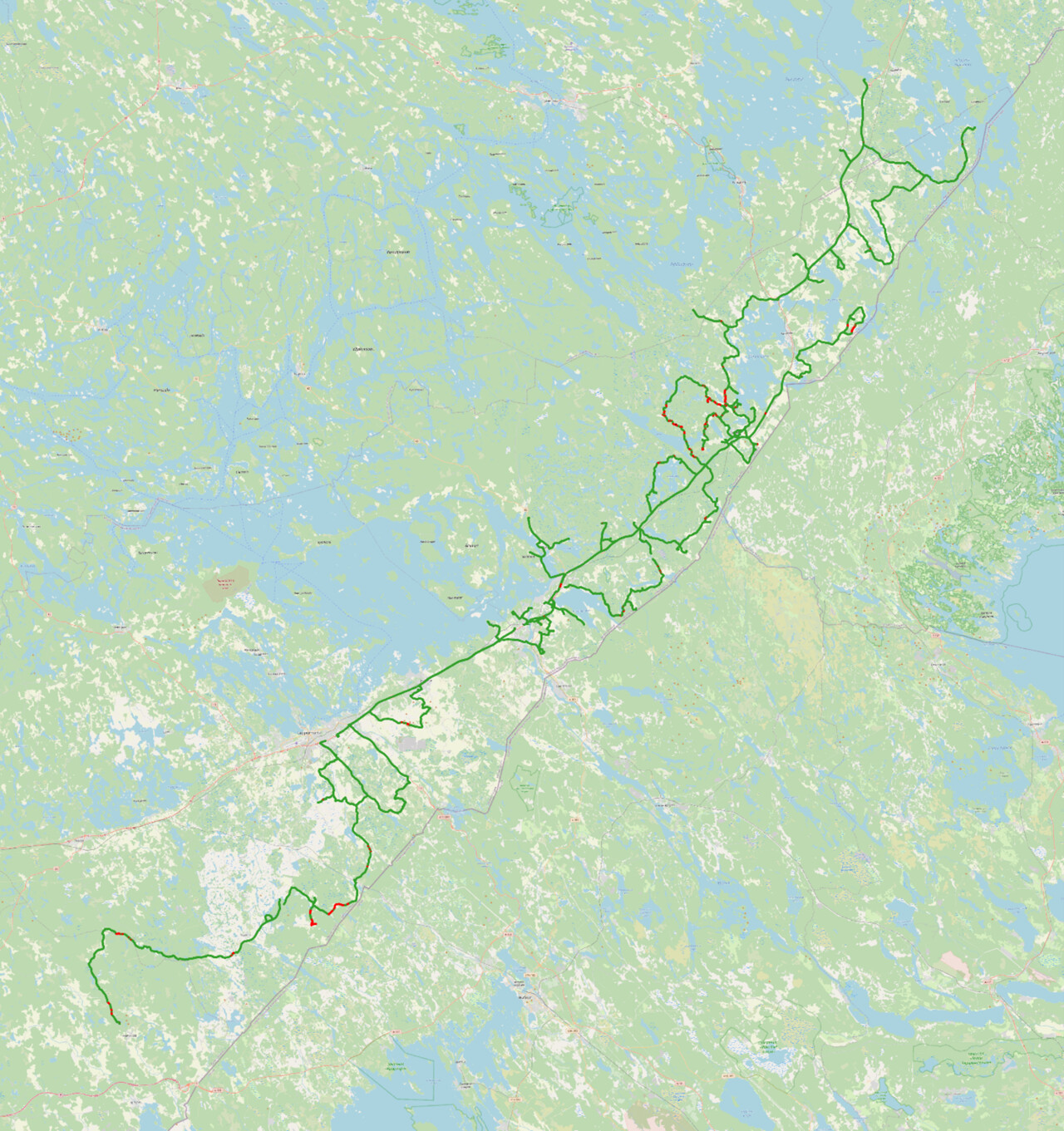The Finnish Transport and Communications Agency Traficom has investigated the availability of mobile network services in the Eastern Finland region on November 21–23 2023. According to the measurement results, basic communication services, i.e. telephone and broadband connections, generally work in the area. Coverage was weaker in some individual areas, and potential problem areas are resolved in cooperation with operators. Traficom began to measure the coverage of the mobile communication network in the Eastern Finland region due to the contacts received by the agency about coverage problems.
Traficom received approximately 130 customer contacts from the Eastern Finland region after it was reported that the 3G mobile network was closed and there were coverage issues. “Old 3G mobile networks are being closed because with the new network technologies (4G and 5G) we can offer service users better connections and coverage everywhere – including the border region”, states Radio Inspection Specialist Jukka Pihonen. This is an international development that operators are currently implementing in Finland as well. Newer mobile communication technologies are also more efficient, environmentally friendly and more secure than old network technologies.
The connections work mainly in Eastern Finland
Traficom's measurements were used to find out the availability of mobile communication networks and the functionality of calls and broadband connections. The measurements were mainly made in the areas of Lappeenranta, Imatra, Rautjärvi, Parikkala, Miehikkälä and Ruokolahti. Coverage measurements were carried out especially in the vicinity of the addresses from which there had been contacts. Based on the measurement results, a more general coverage problem is not noticeable in the area and the services were comprehensively available in the 4G network.
Basic communication services, i.e. telephone and broadband connections, seem to generally work in the area. However, some individual locations with weaker coverage were found in sparsely populated areas, and these are being resolved in cooperation with the operators. In these places, the basic communication services are available at least outside the buildings, but for indoor spaces, the functionality of the services may in some situations require the use of a separate outdoor antenna. With the help of an outdoor antenna, the speed of a broadband connection can often be multiplied.
Everyone in Finland has the right to basic broadband and telephone services in their homes and company offices. Traficom safeguards your rights to a universal service by designating an operator to provide such universal services in areas with otherwise insufficient commercial supply. “We supervise that everyone in Finland has functioning base level communications”, emphasizes Legal Counsel Sari Tujunen.
Traficom also supervises compliance with the license conditions of the mobile communication network. There are obligations related to the population and road coverage in the licence conditions, but mobile communication networks do not have to operate everywhere in Finland. In the vicinity of the eastern border, the coverage obligations of network licenses cannot mainly be applied due to restrictions related to the use of frequencies. Despite this, everyone in the area has the right to basic broadband and telephone services.
Further information
Legal Counsel Sari Tujunen, tel. +358 (0)295 390,336, sari.tujunen@traficom.fi
Background
What does the right to universal service mean?
All consumers and micro businesses have the right to access functioning basic communications services, or universal services, at an affordable price at their home or place of business:
- A broadband connection with an incoming traffic speed of 5 Mbit/s. According to the regulation, it is enough that the minimum speed is 3.5 Mbit/s, the normal speed is 4.5 Mbit/s and the maximum speed is 5 Mbit/s. The minimum speed refers to the minimum speed of the subscription, which is generally always realized. Normal speed is the speed that occurs 90% of the time during each four-hour measurement period. Maximum speed refers to the speed that is achieved at least part of the time.
- Fixed or wireless telephone connection.
- Text message service for the hearing and speech impaired.
- Internet service enabling video calls.
In terms of universal service, it is sufficient that a broadband or telephone connection functions in one spot at the user's home or place of business. Functionality may require the user to take measures to improve indoor coverage, such as a small antenna that is placed on the roof of the building and directed to the nearest base station based on information received from the operator. You can get advice on the purchase and installation of the antenna through the universal service provider in the area.
Guidelines on phone and broadband connection functionality and availability problems can be found on Traficom's website.
How does the 3G network shutdown affect mobile coverage?
The shutdown of the 3G network will especially affect customers who only have devices that work on the 2G/3G network. As the 3G network is shut down, such terminal devices will switch to using only the 2G network. The data capacity of the 2G network is significantly lower than that of the 3G network, which shows to the user as a slower data connection.
The shutdown of the 3G network is done regionally and at different times. When the network is shut down in a controlled manner, possible coverage problems in the area can be detected and solved. As the 3G network is shut down, frequencies are freed up for use by 4G and 5G connections, so connections are expected to improve. Generally, there is also 4G/5G network coverage in the area, so the user can benefit from updating their device and subscription to support newer technology.

